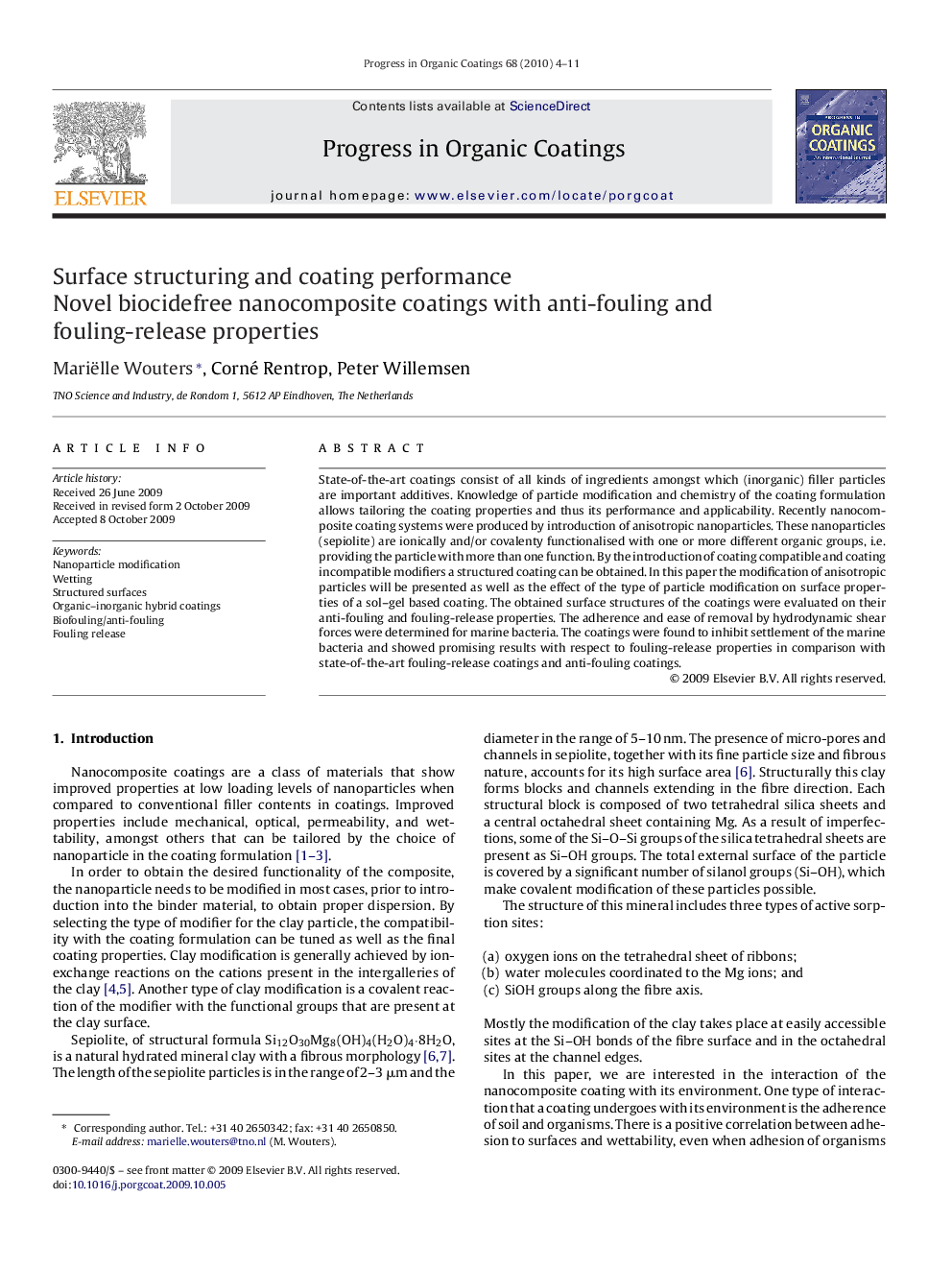| Article ID | Journal | Published Year | Pages | File Type |
|---|---|---|---|---|
| 693368 | Progress in Organic Coatings | 2010 | 8 Pages |
State-of-the-art coatings consist of all kinds of ingredients amongst which (inorganic) filler particles are important additives. Knowledge of particle modification and chemistry of the coating formulation allows tailoring the coating properties and thus its performance and applicability. Recently nanocomposite coating systems were produced by introduction of anisotropic nanoparticles. These nanoparticles (sepiolite) are ionically and/or covalenty functionalised with one or more different organic groups, i.e. providing the particle with more than one function. By the introduction of coating compatible and coating incompatible modifiers a structured coating can be obtained. In this paper the modification of anisotropic particles will be presented as well as the effect of the type of particle modification on surface properties of a sol–gel based coating. The obtained surface structures of the coatings were evaluated on their anti-fouling and fouling-release properties. The adherence and ease of removal by hydrodynamic shear forces were determined for marine bacteria. The coatings were found to inhibit settlement of the marine bacteria and showed promising results with respect to fouling-release properties in comparison with state-of-the-art fouling-release coatings and anti-fouling coatings.
